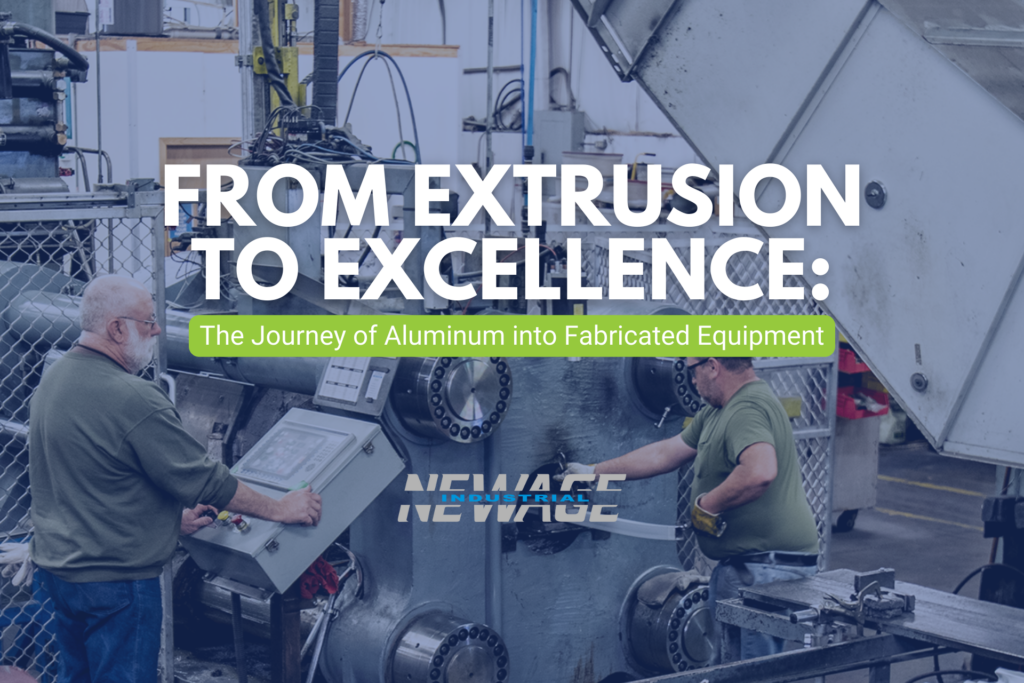
Have you ever wondered how those sturdy aluminum equipment and components are made? It’s a fascinating process that combines cutting-edge technology, engineering precision, and the versatile properties of aluminum. In this blog post, we’ll take you on a journey through the remarkable process of extrusion and fabrication, explaining how aluminum is transformed into the essential equipment we rely on in various industries.
The Initial Stage: Aluminum Extrusion
The journey begins with aluminum extrusion, a fundamental process in which aluminum is shaped into a variety of profiles, such as rods, tubes, and custom shapes, through a series of steps:
a. Billet Preparation: It all starts with aluminum billets, which are cylindrical bars of high-purity aluminum. These billets are heated to a specific temperature to make them more malleable for the extrusion process.
b. Extrusion: The heated billet is loaded into an extrusion press, which contains a die with the desired cross-sectional shape. The press exerts tremendous pressure on the billet, forcing it through the die. This process transforms the aluminum into the desired shape while maintaining its structural integrity.
c. Cooling: The newly extruded aluminum profiles are then cooled using air or water, ensuring they maintain their form and hardness.
d. Aging: The cooled extrusions are uniformly heated and held at a set temperature for 2 hours to harden the aluminum before fabrication.
Fabrication
Once the extrusion process is complete, the aluminum profiles are ready to be transformed into specific equipment or components. This is where design and customization come into play:
a. Precision Cutting: Aluminum profiles are cut to the required length with remarkable precision. These cuts are essential for creating the individual parts of equipment, whether it’s the frame of a machine, a support beam, or any other component.
b. Bending: Many pieces of equipment require a bend in the handle, frame, or other part of the equipment. Precision machines with built in automation make multiple bends at different angles in a single pass.
c. Machining: In some cases, machining processes like drilling, milling, or tapping are employed to create holes, threads, or specific features on the aluminum profiles. This precision work ensures that each component fits together seamlessly.
d. Welding: When necessary, different aluminum components are welded together using specialized welding techniques. Aluminum welding requires expertise to maintain the material’s strength and integrity.
The Final Product: Ready for Service
After going through the extrusion process, the design and customization phase, and the finishing touches, the aluminum components are assembled into the final equipment. This equipment is now ready to serve its intended purpose in various industries, from automotive manufacturing to aerospace, construction, and beyond.
In summary, the journey of aluminum from extrusion to fabricated equipment is a remarkable one. The versatile nature of aluminum, coupled with advanced manufacturing processes, allows for the creation of durable, lightweight, and corrosion-resistant equipment. As technology continues to advance, we can expect even more innovative uses of aluminum in an ever-expanding range of industries, making it a material of choice for equipment and component fabrication.
New Age Industrial is the leading aluminum extruder and fabricator of storage and transportation equipment in the United States. We use a Flexible Manufacturing Process to design and build heavy-duty yet lightweight aluminum products that can be customized to fit your exact needs, completely stress-free. Our unmatched versatility in product design and in-house team of experts make New Age Industrial the Top Choice for material handling and food service equipment. Our products are Proudly Made in the USA!

